Project Summary - Privacy Seed
My final project is an interactive installation: Privacy Seed.
“WHAT DO YOU LOVE AND HOPE TO PROTECT FROM
DIGITAL MASS SURVEILLANCE AND EROSION OF PRIVACY?”

Note: Work in progress - I will keep updating this page with a summary of the Fab Academy final project.
Privacy Seed is an art installation to challenge the intersections of personal spaces and data privacy, the connection of human identity and its digital extensions.
A wooden tree structure holds at its center an anatomical heart object with an heartbeat sensor.
By holding this heart in their hands the participants start interacting with the tree lights and sounds.
The participants’ heartbeat will be used to “seed” a secure digital random number generator that publishes its results to the web.
Privacy Seed is a reflection on our personal-and-digital identity boundaries. It is an exploration of our intimate spaces and their public digital shadows.
- Ideation, sketching and planning
- Anatomical heart shape
- Heart rate sensor
- Tree structure
- Lights ad sound control
- Random number generation and interface
- Progress and next steps
Ideation, sketching and planning
The main inspiration comes from the Climate Ribbon’s tree that I saw during the COP21 climate conference in Paris:
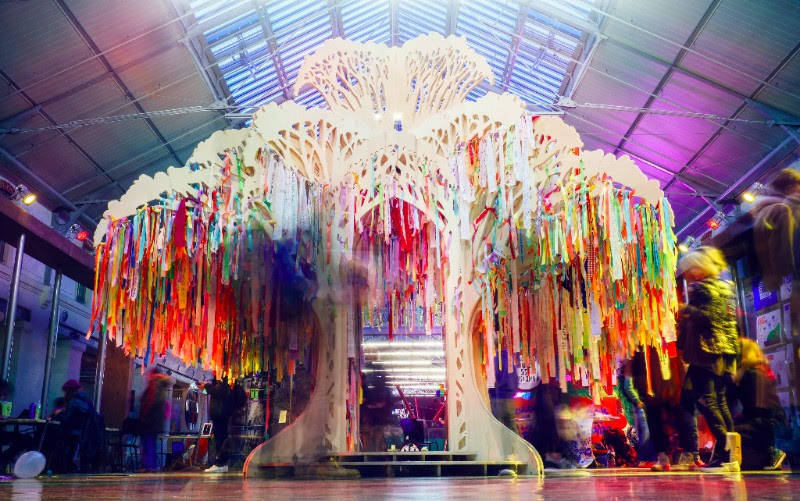
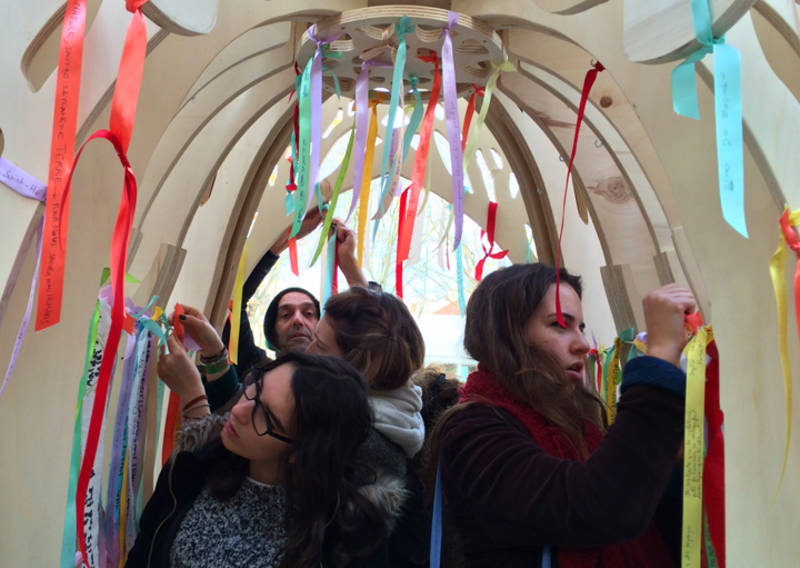 Pictures from The Climate Ribbons project
Pictures from The Climate Ribbons project
In one of the first weeks I started sketching: 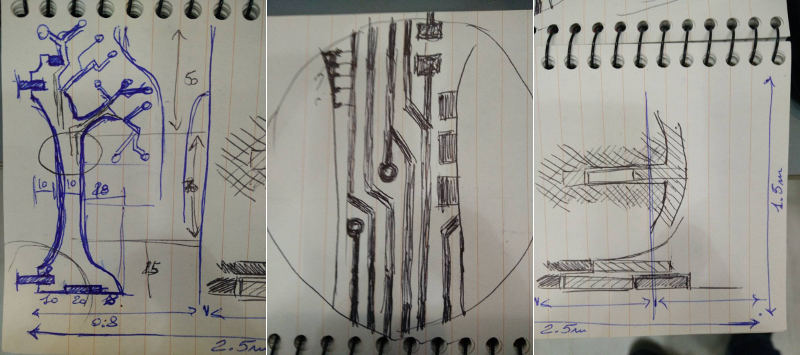
and I came with a list of main parts and problems to solve:
- Anatomical heart shape
- Tree structure (cardboard, small)
- Heart rate sensor
- Tree & heart lights
- RNG, Web API & pages
Optionally also:
- Heart pressure switch
- Heartbeat sound
- A bigger tree structure made of wood
The full initial plan is available here and more details in the applications and implications week assignment.
Anatomical heart shape
Starting from a sample heart shape available on thingverse (eg. Solid Anatomical Heart by huntgather98 - CC-BY-SA): 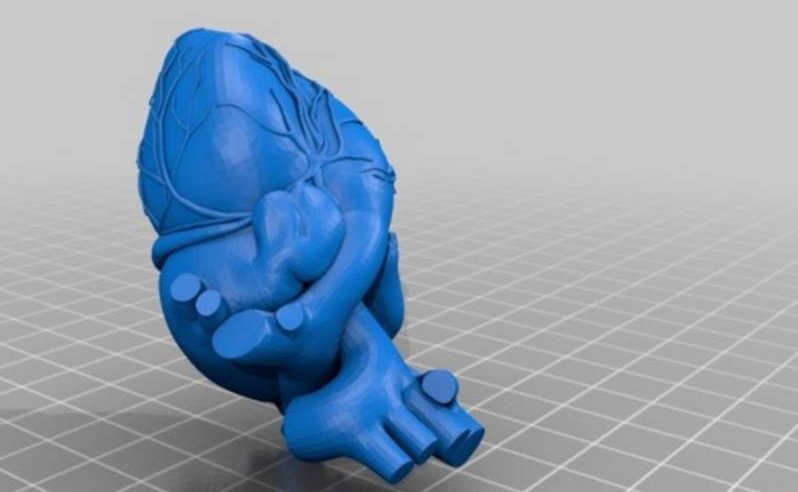
I designed a mesh for the heart shape: 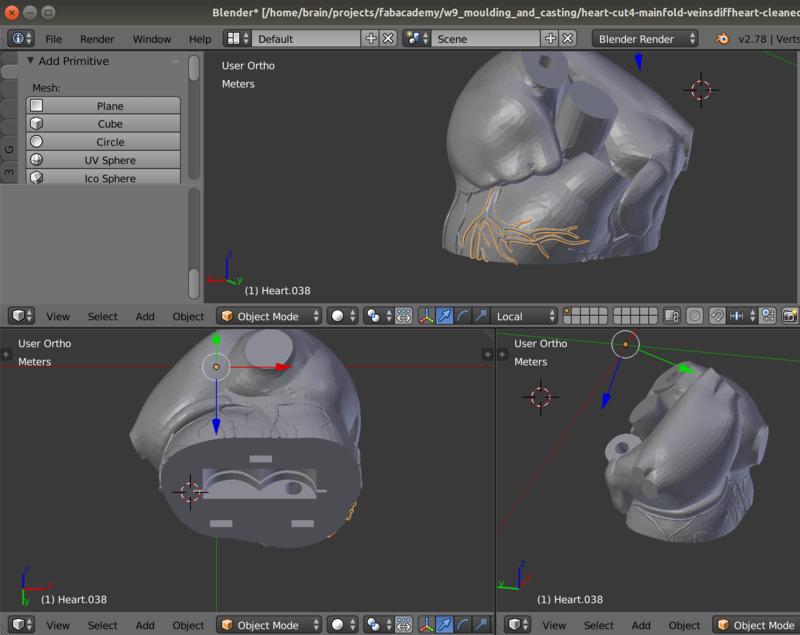
And 3D printed it: 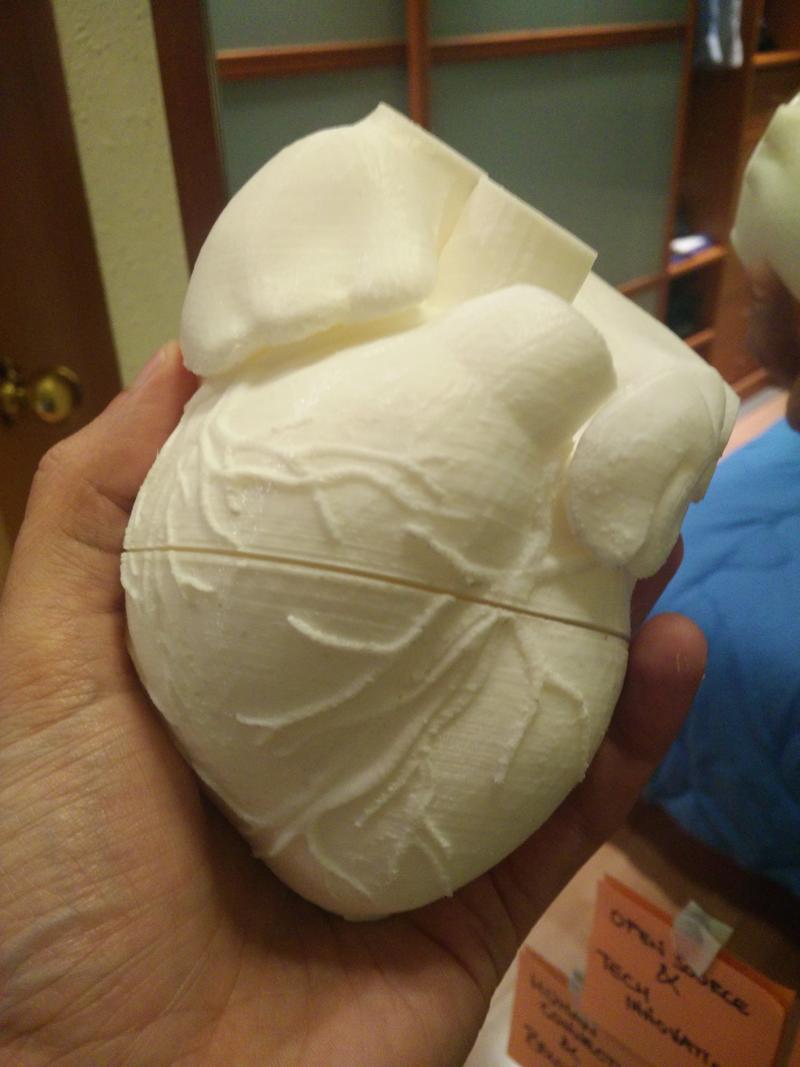

More details at the Casting a heart shape page.
Heart rate sensor
At this point I selected a sensor that uses Pulse Oximetry to detect the hartrate: The MAX30101 sensor
I had many iterations to design a tiny sensor board

This is supposed to be controlled by another board with a microcontroller that is meant to be integrated and casted inside the heart shape and give some visual feedback with an LED.
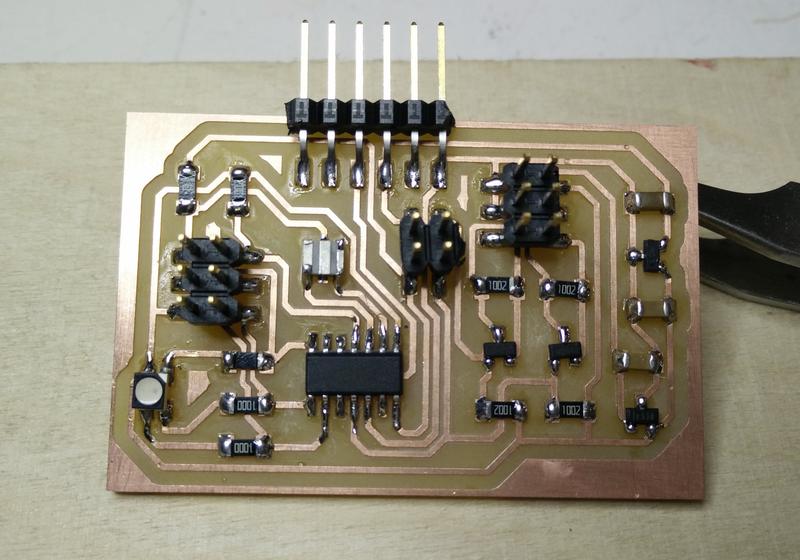
More details at the Heart rate sensor page.
Tree structure
I started designing a small scale 3D model to prototype first with cardboard then in plywood

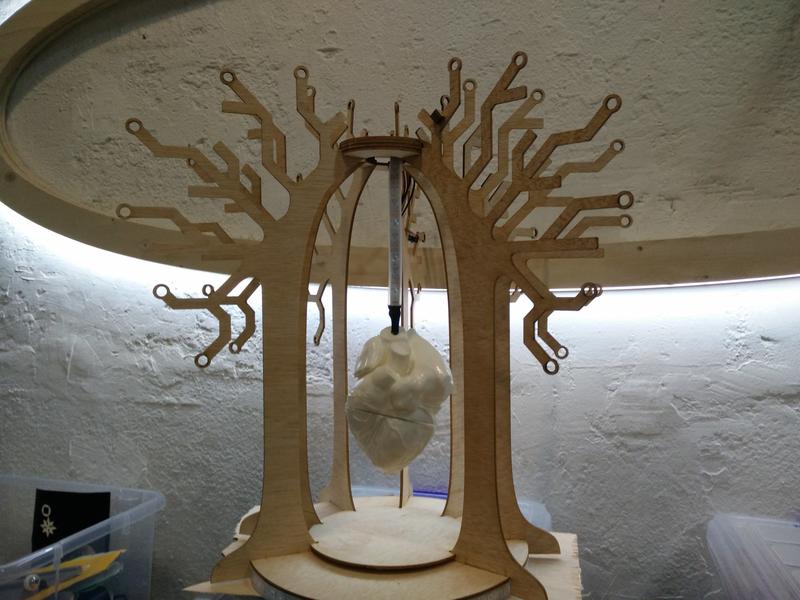
More details at the Tree structure page page.
Lights ad sound control
I tested AdaFruit DotStar LED pixed strip to generate light patters and created a custom board to control the lights.
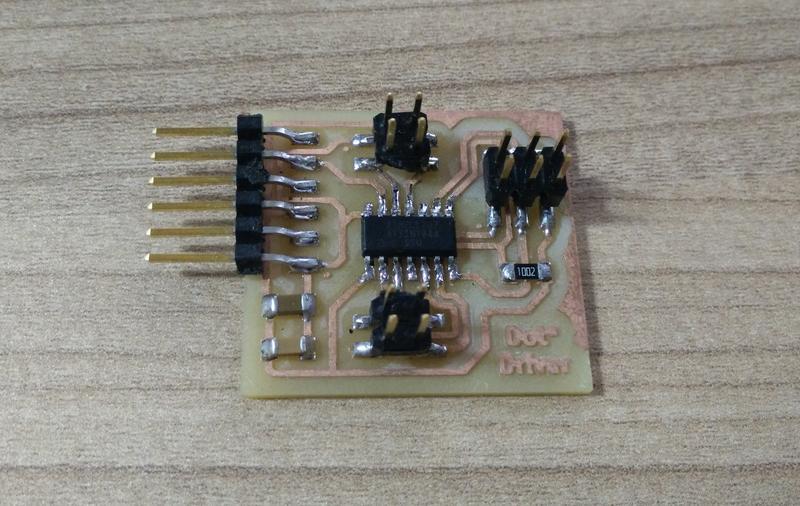
I also creates initial simple interactions from the input sensor to the light controls:
More details at the Lights and sound control page page.
Random number generation and interface
I started analising the possible options to generate “cryptographically secure” pseudo-random numbers.
The preferred option would be to use a linux based board like a Raspberry-Pi zero. Optionally an AVR board could be used for non “non-cryptographically secure” random numbers.
More details at the Random number generator page.
Progress and next steps
A simple MVP (to complete pass the FabAcademy exam :)) could be composed of the heart shape, electronics only and a small plywood board tree.
| Activity | Progress | ||||||||
|---|---|---|---|---|---|---|---|---|---|
| Anatomical heart | 45% | ||||||||
| Tree structure (small) | 100% | ||||||||
| Heart rate sensor | 90% | ||||||||
| Tree & heart lights | 90% | ||||||||
| RNG, Web API & app | 5% Optional | Progress | Heart pressure switch | 0% Heartbeat sound | 5% Tree structure (big) | 5% |
See more details in future steps and dissemination plan page.